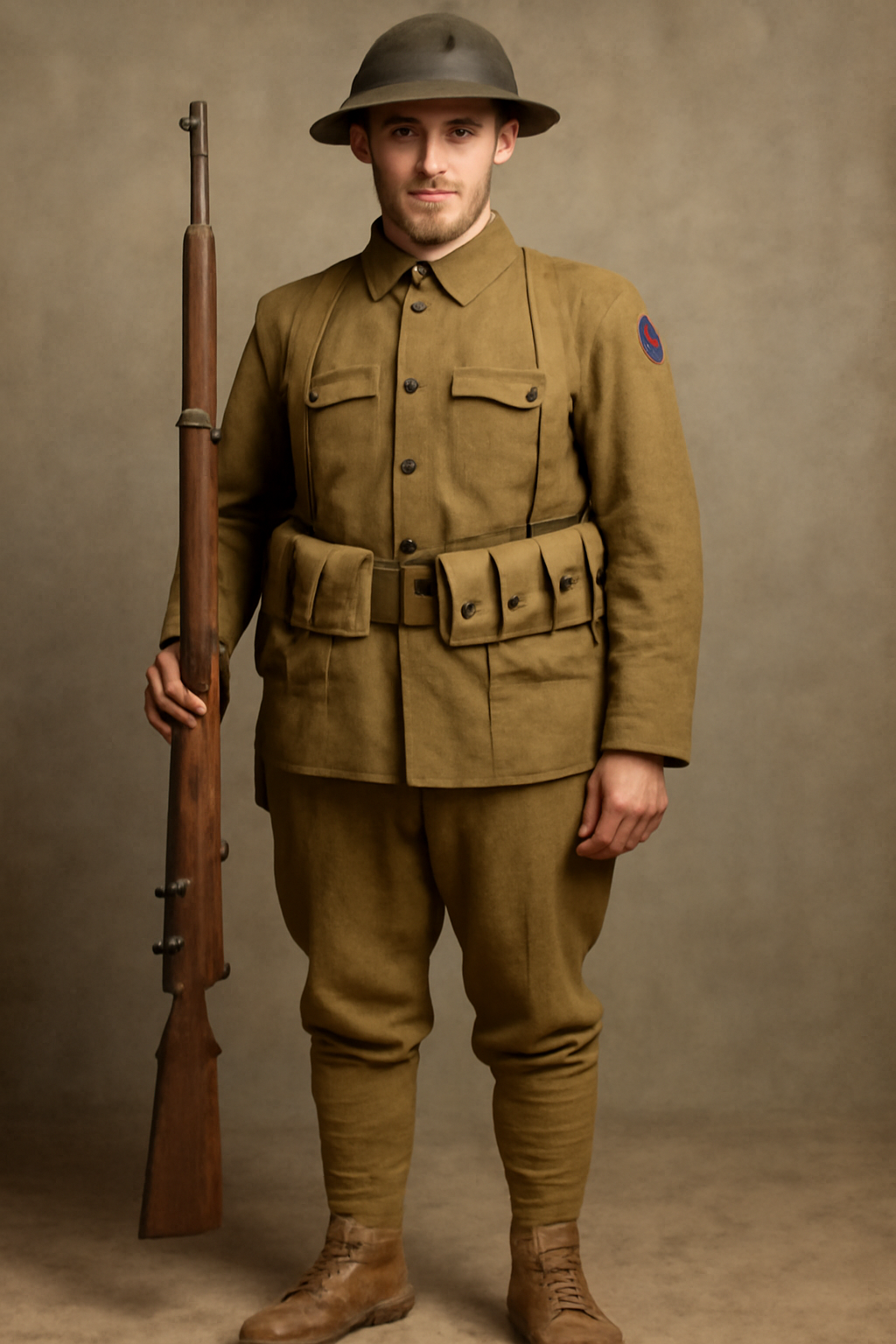
WW11 Navy Uniforms & US WWI Army Uniforms: A Collector’s Guide to Military History Gear
Published on Oct 02, 2025
🪖 Introduction:
Did you know that the iconic doughboy helmet wasn't issued until mid-World War I, leaving early American troops exposed in trench warfare?
Military uniforms are more than just fabric—they’re stitched with history, innovation, and identity. For collectors, reenactors, and history enthusiasts, studying attire like the US WWI Army uniform or the WWII navy uniforms opens a window into the past.
In this guide, we’ll break down what made these uniforms special, how to collect or replicate them accurately, and which trends are shaping the hobby today.
🇺🇸 What Made the US WWI Army Uniform Unique?
H2: WW11 Navy Uniforms vs. US WWI Army Gear – Key Differences
While WW11 navy uniforms evolved for mobility and shipboard use, WWI army uniforms were built for trench warfare. Here’s how they compare:
Feature WW11 Navy Uniforms US WWI Army Uniforms
Material: wool blends, denim, cotton Wool (heavyweight), canvas
Primary Color: Navy blue, white, Olive drab
Design Purpose: Naval combat, ship duties, Ground warfare, trench mobility
Common gear: Crackerjack jumper, watch cap, Brodie helmet, leggings, service coat.
Real-Life Example:
Collectors often confuse WWI olive drab coats with WWII versions. But look at the collar insignia—WWI models usually had branch-specific discs (e.g., infantry crossed rifles).
🧵 Anatomy of the US WWI Army Uniform
Here’s what made up a standard US WWI soldier’s kit:
- M1912 Wool Tunic – 5 buttons, stand-up collar
- Wool Breeches – Tight below the knees, worn with puttees
- Puttees/Leggings – For leg protection in muddy trenches
- Brodie Helmet – Steel protection, issued from 1917 onward
- M1910 Haversack & Canteen – Standard issue gear
Related Uniform Spotlight:
WW1 Marine Uniform – Shared many elements with the Army but used distinct globe-and-anchor buttons and greenish tones rather than olive.
⚠️ Common Pitfalls When Buying or Collecting
H2: Avoid These Mistakes When Searching for WW11 Navy Uniforms or WWI Army Gear
Whether you're buying online, at auctions, or at estate sales, watch out for these traps:
1. Misidentified Items
- WWI jackets mislabeled as Spanish-American War items
- FakeWW11 navy uniforms using post-war patterns
- Modern reenactment gear passed off as original
2. Overpaying for Reproductions
Many reproductions are excellent—but they should cost less than authentic pieces. Use forums, collector communities, or appraisal services.
3. Ignoring Condition
Even minor moth damage or rusted buttons affect value. For display purposes, condition matters more than rarity.
🛠️ Actionable Steps for New Collectors
H2: Start Your WW11 Navy Uniforms & WWI Collection Like a Pro
1. Define Your Focus:
- Army vs. Navy
- Specific battles (e.g., Meuse-Argonne)
- Branches (e.g., Infantry, Marines, Pilots)
2. Learn from Authentic Sources:
- Visit military museums
- Join Facebook groups like “WWI & WWII Reenactors and Collectors”
- Read manuals like the 1917 Quartermaster Uniform Guide
3. Start Small:
- Look for less expensive items like leggings, canteens, or uniform buttons
- Avoid big purchases until you’re confident
4. Know What to Pay:
Here's a rough price guide (2025 estimate):
Item Authentic Price Range
WWI Wool Tunic (Army) $200–$600
WW11 Navy Jumper (Enlisted) $150–$400
Brodie Helmet $100–$500
Spanish-American War Belt $250–$700
✈️ Spotlight: WW1 German Pilot Uniform
Though not American, the WW1 German pilot uniform reflects the innovation of the era. These uniforms featured:
- Heavy leather jackets
- Wool flight trousers
- Fur-lined boots and flight goggles
Collectors often compare them to World War I Navy uniforms, which had simpler wool designs and lacked aviation-specific gear.
🔍 Trending Now: Modern Reenactment & Reproduction Gear
Reenacting has become a booming niche. But it’s important to balance accuracy with comfort.
H2: WW11 Navy Uniforms & WWI Reproductions – What’s Hot in 2025
- Custom Wool Tunics: Accurate cuts for reenactors
- 3D-Printed Insignia: Used for rare reproductions
- Digital Camouflage Comparison: Historical reenactors debunk modern myths by showing why WWI patterns were effective
- Virtual Reenactments: Some collectors are using VR and AR to recreate battles in historically accurate uniforms digitally
Pro Tip: If you're building a WWI Marine or Navy impression, ensure your buttons, belt buckles, and hats match original photos.
📸 Where to Find Authentic Pieces
Best Sources for WWI and WWII Navy Uniforms:
- eBay: Search with filters like "WWI original" or "US Navy WWII authentic"
- Military Shows: SOS (Show of Shows) in Kentucky is the biggest in the US
- Forums: US Militaria Forum, War Relics Forum
- Online Stores: At the Front, Hessen Antique (for repros)
📚 Bonus: Spanish-American War Uniforms
Don’t overlook earlier conflicts! The Spanish-American War uniforms (circa 1898) were khaki-coloured, a major shift from Civil War blue.
Why it matters:
- These designs influenced later WWI gear
- Tunics were lighter, tropical-ready
- The pith helmet was commonly used
🧭 Conclusion: Chart Your Path Through History
Whether you’re drawn to the US WWI Army uniform, the polished WWII navy uniforms, or rare finds like the WWI German pilot uniform, you’re not just collecting gear—you’re preserving history.
✅ Take Action:
- Start your research today
- Join a reenactment group
- Share your finds with a local museum or community
Each button, patch, and thread tells a story. Dive into this fascinating world—and wear history proudly.
